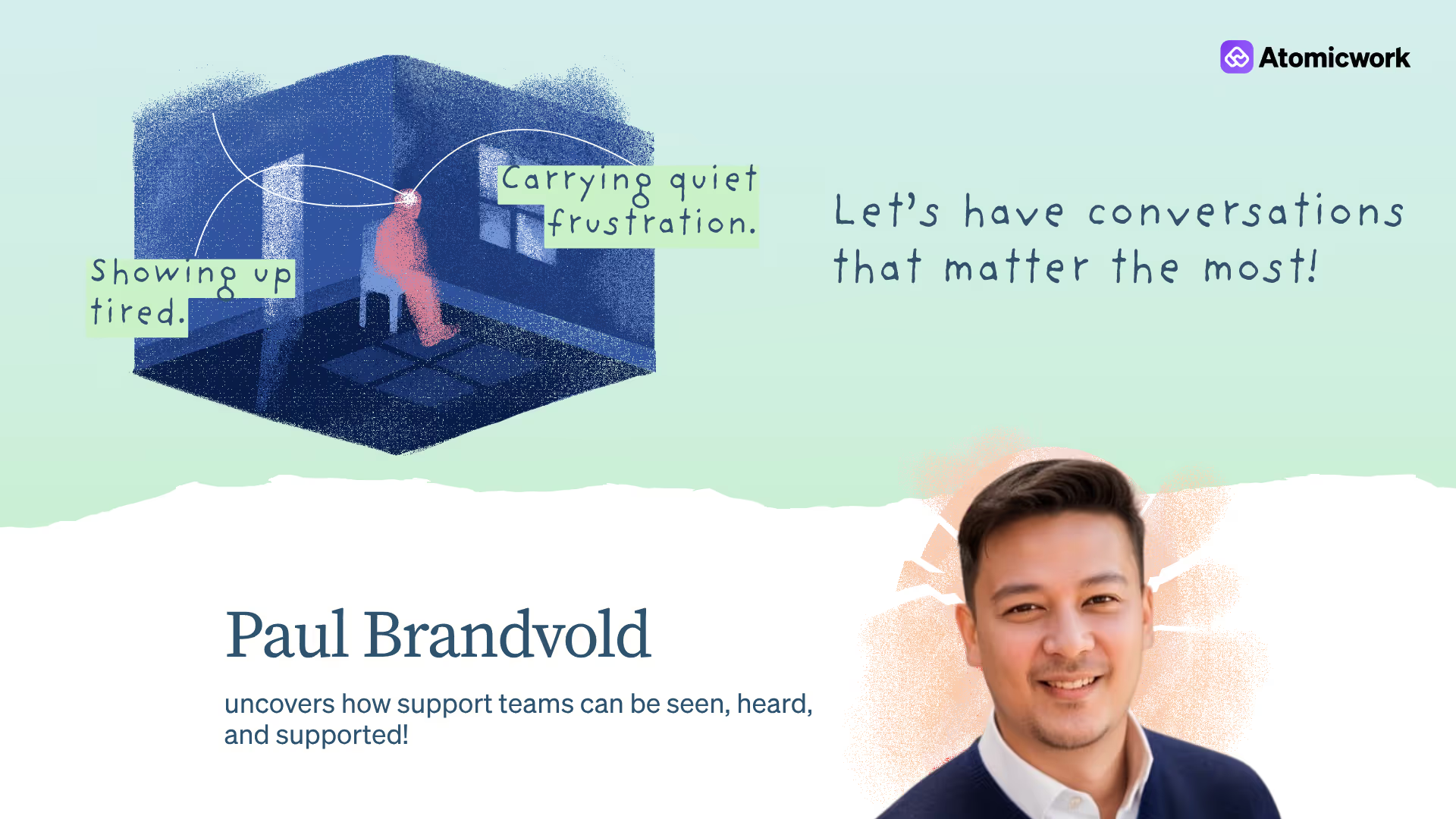6 Expert tips for IT support teams to boost agent morale

When I joined Paul Brandvold and Indi Catrina for our LinkedIn Live, we didn’t talk about grand strategies or complex frameworks. We talked about the everyday frictions that wear people down and the small changes that can turn those same moments into morale boosters.
Paul, a seasoned IT leader with a track record of building high performing global teams, brought decades of operational wisdom to the table. Indi, known for her people-first approach to service management, shared candid stories and practical tactics drawn from her own experience leading diverse IT support functions.
Here’s what came out of that conversation; six practical things any IT leader can do to make their team’s work better, lighter, and more human!
1. Protect the team’s Focus
Paul said something early on that’s stuck with me: “If everything’s urgent, nothing is.”
IT support teams live in a world of constant interruption — Slack pings, “just five minutes” requests, last-minute calls. It’s exhausting, and it kills deep work. Paul’s fix is simple: build a filter.
In my experience, it’s mostly about culture and morale. Morale can drop a long time before the performance shows it. You’ll start seeing silent fatigue, process burden, lack of recognition and people just get worn down. That’s why protecting the team from constant noise and unnecessary pressure matters so much. - Paul Brandvold, ITIL 4 Master and ITSM Voice
That could be a dedicated triage person or a clear routing process for requests. Either way, you’re shielding your frontline from noise so they can focus on solving problems well — not just reacting to whatever lands in their lap next.
2. Make escalations safe
Indi’s pet peeve? The way “escalation” is treated like a personal failure. She reframes it completely: escalation is simply “I need something more than I have here.”
She even categorizes them — technical, managerial, or process — so there’s no guessing about what kind of help is needed. This doesn’t just make things faster; it protects morale. Your team won’t hesitate to escalate when they know it’s not a mark against them.
3. “The Grandma Rule” for documentation
We laughed about this one in the live because it’s painfully true: documentation is always “important,” but it rarely gets the time it deserves. And when it’s rushed or skipped, the result is predictable — wasted hours, repeated work, and new mistakes.
Paul’s rule is to write for “the person after you” — the next person who will pick up the work. Indi puts it this way:
When you write something down, don’t write it for yourself — write it for someone who has no context at all. I always say, pretend you’re explaining it to your grandma. She’ll spot every missing step you thought was obvious. - Indi Catrina, ITIL 4 Master and Service Management at Oracle
It’s not about making enterprise knowledge documentation childish; it’s about making it human-friendly. The Grandma Rule forces clarity, simplicity, and completeness — and that’s what makes documentation worth having.
4. Give autonomy and trust
We all agreed: the fastest way to sap energy from your team is to make them get approval for every small decision.
Paul told a story about teams that empower people to upgrade a ticket’s priority on the spot if they see it’s urgent, no forms, no manager sign-off. That kind of autonomy doesn’t just speed up work, it builds ownership. And ownership fuels morale.
5. Recognize people in ways that matter
Recognition came up more than once. And we weren’t talking about glossy all-hands shout-outs. Sometimes, a quick, private “thank you” in the moment has more staying power than a public award.
The key is knowing your people - what makes one person feel valued might feel hollow to another. Recognition works best when it’s personal, genuine, and timely.
6. Use AI to remove the grind
AI isn’t here to replace the people doing IT support and we all agreed on that. It’s here to take away the repetitive, low-value tasks that eat into their day.
Think ticket routing, pulling relevant documentation instantly, summarizing incident histories. Used right, AI is the quiet teammate that frees humans to do the complex, judgment-heavy work they actually want to be doing.
The takeaway?
Better IT support teams aren’t built by accident. They’re built through small, deliberate choices, to protect focus, make help-seeking safe, leave better documentation, trust your people, recognize them meaningfully, and use tools like AI to make their work lighter.
Frequently asked questions

Faq answer paragraph

Faq answer paragraph

Faq answer paragraph

Faq answer paragraph

Faq answer paragraph

Faq answer paragraph

Faq answer paragraph

Faq answer paragraph

Faq answer paragraph

Faq answer paragraph
You may also like...


































